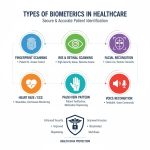Global Heat Meter Market Trends & Forecast 2025–2035 | Growth, Technology, Opportunities
The global Heat Meter Market, valued at USD 1.93 billion in 2024, is projected to reach USD 3.8 billion by 2035, exhibiting a compound annual growth rate (CAGR) of 6.40% from 2025 to 2035. This optimistic trajectory reveals the growing importance of precise thermal energy measurement across a range of applications, largely driven by climate initiatives, energy conservation demands, and the continuous expansion of district heating and cooling systems. Traditionally utilized in urban residential and commercial buildings, industrial sites, and energy plants, heat meters have evolved from basic measuring tools to intelligent devices supporting environmental monitoring and cost-saving solutions.
With sustainability becoming a core principle in global energy policy frameworks, industries and governments alike are emphasizing efficient energy management. One of the primary growth drivers of the heat meter market is the increasingly stringent regulation requiring accurate consumption measurement in district heating grids. These initiatives are particularly prominent in European nations, where energy efficiency directives mandate energy billing based on actual consumption, thereby ensuring transparency and promoting energy savings.
District heating systems, which distribute thermal energy centrally from power plants to residential and commercial structures, have become significant end-users of heat meters. This segment’s expanding infrastructure, especially in cold-climate countries, is a central catalyst for market demand. As cities modernize and new infrastructure projects emerge, reliable thermal monitoring tools like heat meters are integral to operational efficiency and regulatory compliance.
On the downside, the rising adoption of decentralized heating systems, such as heat pumps and rooftop solar thermal systems, may temper market growth in certain regions. These systems often operate independently of centralized networks, reducing reliance on traditional metering needs. Furthermore, upfront installation costs and continuous maintenance represent economic barriers in developing regions, where cost sensitivity shapes adoption rates.
Yet, opportunities abound. Growing awareness about optimizing building energy performance, enhanced metering standards, and increasing smart city initiatives are poised to accelerate smart heat meter deployments. Consumers today show a growing preference for devices capable of offering real-time data analytics and remote monitoring — capabilities that traditional heat meters often lack.
In terms of segment performance, residential applications dominated the market in 2024 due to consumers’ growing need to monitor and reduce their heating costs. However, the commercial and industrial sectors are not far behind, as more businesses invest in sustainability targets and energy audits. Moreover, the growing complexity of heating demands in manufacturing units and large-scale commercial operations underscores the need for innovative metering solutions.
Looking ahead, the heat meter market’s continuing expansion will depend not only on technological innovations but also on the degree to which governments and utility providers push for energy transparency and conservation. Investing in public awareness, coupled with policy-backed incentives, will further enhance the global demand for these devices over the next decade.
Technological Advancements Impacting the Market
As the world becomes more interconnected, technology is revolutionizing the heat meter market in exceptional ways. At the forefront of this change is the growing integration of smart metering solutions, turning previously passive devices into proactive nodes in the digital energy ecosystem. Central to this technological evolution are smart meters embedded with Internet of Things (IoT) capabilities, which deliver precise, real-time thermal data and pave the way for more dynamic energy management practices across diverse end-use sectors.
Modern heat meters, enhanced by IoT, no longer just record heat consumption but also communicate this data wirelessly to centralized systems for analytics. These smart meters collect temperature differences, flow rates, and energy usage patterns while identifying inefficiencies and enabling predictive maintenance. This transition to smart infrastructure is critical for smart city frameworks where energy optimization is paramount. IoT-enabled heat meters can integrate with centralized dashboards and cloud-based platforms, allowing utility providers and end-users to monitor, analyze, and optimize energy usage in real-time.
Moreover, innovations such as ultrasonic heat meters, which use sound waves rather than mechanical parts to measure flow, are gaining popularity due to their enhanced accuracy, longer lifespan, and low maintenance needs. Non-invasive and highly reliable, these meters are ideal for municipal and industrial applications. Coupled with advanced data logging and cellular connectivity, today’s meters offer actionable insights that were unimaginable a decade ago.
Another key area of advancement is the fusion of heat meters with renewable energy systems. As homes and businesses adopt solar thermal collectors, geothermal systems, and heat pumps, there is a rising demand to track heat generation and consumption from these sources accurately. Smart meters are increasingly supporting integration with Building Management Systems (BMS), providing a unified platform for managing both renewable and traditional heating sources. This integration ensures energy optimization while maintaining compliance with energy performance standards.
Furthermore, advanced software interfaces now allow users to visualize usage trends, detect anomalies, and receive instant updates through mobile applications. This software layering enables proactive consumption behavior, where users can adjust heating schedules based on costs, temperature forecasts, and predefined usage thresholds.
Artificial intelligence (AI) and machine learning (ML) algorithms are also entering the spotlight. These technologies analyze extensive datasets collected from heat meters to offer insights into the optimal energy use strategy. For instance, an AI engine could adjust heating distribution in a commercial building based on occupancy data, historical usage, and weather predictions — improving both comfort and efficiency.
While these technologies promise a range of benefits, challenges remain in standardization, cybersecurity, and data privacy—especially given the sensitive nature of utility and consumption data. Global cooperation in developing secure communication protocols and open standards will be crucial for the continued growth of smart technologies in the heat meter industry.
These advancements are redefining heat meters from simple consumables into intelligent systems that form the backbone of modern thermal energy management. As new tech unfolds, the adoption curve will likely steepen—especially in regions emphasizing digital infrastructure, renewable integration, and autonomous energy systems.
Geographical Insights and Market Dynamics
The heat meter market exhibits varied dynamics across different global regions, shaped by regional government policies, heating infrastructure maturity, and climate sensitivity. While Europe remains the undisputed leader in heat meter deployment, other areas such as North America and Asia-Pacific are emerging as strong contenders with unique drivers and opportunities shaping their respective trajectories.
In Europe, stringent regulations under the Energy Efficiency Directive promote accurate billing in multi-dwelling units and district heating networks—a key reason why countries like Germany, Denmark, Sweden, and Finland dominate the current installation base. District heating penetration is high in Nordic countries where climate demands justify centralized heat distribution. Building automation, government funding, and consumer awareness have collectively maintained Europe’s leadership in high-precision smart metering adoption.
North America is seeing gradual growth as focus shifts to smart city planning, green building certifications (LEED, WELL), and precision energy management in residential and commercial sectors. With heating systems largely decentralized in many parts of the U.S. and Canada, individual monitoring tools—such as heat meters—are crucial for tenant-level billing accuracy and energy efficiency audits. Growing concerns about climate change and ambitious emission reduction targets are encouraging municipalities to invest in metering infrastructure as part of broader smart infrastructure upgrades.
The Asia-Pacific region, however, is showing the fastest adoption rate due to rapid urbanization, industrial expansion, and smart infrastructure investments in countries like China, India, South Korea, and Japan. In China, district heating networks are expanding rapidly in colder northern regions, driven by strong government support for clean energy and emission control. Additionally, large-scale urban redevelopment projects offer a natural entry point for advanced thermal metering infrastructure.
India, despite infrastructural gaps, presents enormous long-term potential as it pushes toward sustainable urban development under initiatives like “Smart Cities Mission”. As renewable energy technologies (e.g., solar thermal systems) grow in urban and semi-urban areas, accurate thermal energy management will amplify the importance of heat metering technology. Subsidy schemes, awareness campaigns, and partnerships with international technology providers can accelerate this trend.
Factors such as regulatory maturity, availability of public-private partnerships, technological readiness, and climate extremities all influence market adoption rates across regions. Notably, geopolitical elements like energy supply security & decarbonization goals in Eastern Europe and parts of Central Asia further bolster demand.
While Europe continues to drive the bulk of heat meter installations, North America’s regulatory evolution and Asia-Pacific’s industrialization wave are unlocking new avenues for manufacturers, suppliers, and integrators. By tailoring products to suit local environmental, infrastructural, and fiscal realities, market players can tap into a truly global opportunity.
Segment Analysis: Applications and Types
The global heat meter market can be segmented comprehensively based on application, meter type, and connectivity options. Each segment plays a critical role in the adoption and growth of this technology, influenced by factors such as building infrastructure, heating systems, and regulatory frameworks. Understanding these applications and meter characteristics provides valuable insights into how industry stakeholders—from device manufacturers to energy utility companies—can position their products and strategies for optimal market impact.
Key Takeaways from Segment Analysis:
- Residential applications continue to drive market volumes, but commercial and industrial usages offer significant growth potential.
- Ultrasonic heat meters are increasingly preferred for their accuracy, durability, and digital compatibility.
- Wireless connectivity is rapidly replacing wired systems due to advantages in remote monitoring and smart grid integration.
- Hybrid and modular designs are paving the way for more versatile metering infrastructure.
As the market moves toward digital transformation and smart utility grids, selecting the right type and application method of heat meter will be essential for energy providers, government projects, and private consumers. The continued innovation within this segment ensures a promising future for thermal energy monitoring systems worldwide.
Distribution of Heat Meters by Application
The primary applications of heat meters are found across three key sectors: residential, commercial, and industrial. Among these, the residential sector dominates the market, accounting for the largest share in 2024. In multi-dwelling units or apartment complexes particularly in Europe and increasingly in Asia, heat meters ensure individual apartments are billed based on actual heat consumption rather than fixed or estimated rates. This incentivizes energy-conscious behavior among end-users while aiding property developers in obtaining green building certifications.
Following residential use, the commercial sector—which includes office buildings, shopping centers, hospitals, schools, and hospitality facilities—is increasingly deploying heat meters as part of broader energy monitoring and building automation systems. These meters help facilities managers optimize heating operations, reduce utility costs, and comply with governmental energy efficiency mandates.
The industrial application segment, while smaller in terms of volume, holds high revenue potential due to the large-scale and complex heating and cooling operations in manufacturing plants, chemical refineries, and data centers. In such environments, precisely metering the amount of thermal energy used can significantly impact operational efficiency and reduce overall workflow costs. Moreover, industries undergoing decarbonization are actively leveraging heat meters to monitor carbon footprint in their heating activities.
Types of Heat Meters: A Comparative Overview
Heat meters generally fall under a few core types: mechanical, ultrasonic, and electromagnetic.
- Mechanical Heat Meters:
These are traditional devices that use turbines or impellers to track water flow and measure heat based on the flow rate and temperature differential. Their primary advantage lies in their low upfront cost and proven reliability. However, they involve moving parts subject to wear and tear, resulting in periodic maintenance or calibration requirements. They’re best suited for legacy systems or low-budget installations with limited digital infrastructure. - Ultrasonic Heat Meters:
Fast becoming the industry standard in many markets, these meters use sound waves to measure the flow of fluid within pipes. Their lack of moving parts ensures greater durability and minimal maintenance. They offer superior accuracy and are well-suited for smart metering solutions, especially when paired with automated systems. Additionally, these meters can handle variable flow rates and harsh environmental conditions more effectively. - Electromagnetic Heat Meters:
Though a niche segment, these meters offer the capability to measure conductive liquids and are ideal in industrial environments. They provide high accuracy and are particularly useful for non-traditional heat-carrying fluids. However, they tend to be more expensive than mechanical and ultrasonic variants, which limits widespread adoption.
The ultrasonic segment is projected to experience the fastest growth during the forecast period, propelled by digital transformation, advancements in metering technology, and the increasing need for low-maintenance solutions in harsh climatic regions.
Connectivity Options: Wired vs Wireless
In today’s tech-driven environment, the ability to connect and transmit data remotely has become a vital factor in choosing a heat meter. This has led to two distinct categories of connectivity:
- Wired Heat Meters:
These meters use physical cabling (like M-Bus, RS-485) to transmit data to local data collection hubs. They offer high reliability and are generally less prone to signal interference, making them ideal for large apartment complexes and commercial facilities with centralized networks. Despite their reliability, wired systems can be expensive and complex to install and retrofit. - Wireless Heat Meters:
Leveraging protocols like LoRaWAN, NB-IoT, and Zigbee, wireless heat meters are growing in popularity due to their flexibility, ease of installation, and support for remote monitoring. They’re especially beneficial in urban areas where retrofitting physical wiring is disruptive or costly. Maintenance teams can receive usage alerts, error reports, and diagnostics data in real-time, improving operational efficiency.
Wireless meters are pushing the boundaries of conventional energy monitoring by integrating with building management systems (BMS), mobile apps, and cloud platforms. This convergence not only simplifies heat data collection but also opens the door to AI-based analytics for usage forecasting and intelligent control systems.
Hybrid and Modular Designs
A noteworthy innovation in recent years is the emergence of hybrid models—meters capable of switching between wired and wireless modes depending on network availability. These models appeal to utility providers and municipal projects that require flexibility across locations. Furthermore, modular heat meters, which allow for interchangeable communication modules, are gaining traction with customers looking for future-proof hardware investments.
Competitive Landscape and Key Players
The global heat meter market is highly competitive, characterized by a mix of leading multinational corporations, regional players, and emerging startups that constantly innovate to gain market share. As this sector becomes increasingly central to energy management, heating efficiency, and climate policy enforcement, competition has intensified, pushing companies to focus on product innovation, technological integration, and global expansion strategies.
Competitive Landscape Insights
- The heat meter market is composed of a tight core of established global players, but regional and niche competitors are fast gaining ground.
- Product innovation, digitization, and customization will remain the primary differentiators in a progressively saturated market.
- Strategic decisions including M&A, regional expansion, and sustainability initiatives are being used to gain traction and stay competitive.
As market needs shift toward smart energy solutions and legislation around carbon emissions becomes stricter, we can expect future competition to move beyond traditional hardware. Companies will need to prepare for a software-driven future in metering, emphasizing end-to-end platform solutions, energy intelligence, and value-added digital services.
Leading Companies in the Market
Some of the most prominent players dominating the heat meter landscape include:
- Landis+Gyr
A key player in smart metering solutions, Landis+Gyr offers a wide range of heat and cooling meters integrated with communication modules and data management software. The company is renowned for offering full end-to-end solutions for smart metering infrastructure worldwide. - Siemens AG
Siemens continues to lead the market with its advanced metering infrastructure, particularly in Europe and North America. The company focuses on smart ultrasonic meters integrated with building automation and smart city systems. - Kamstrup A/S
Based in Denmark, Kamstrup is one of the most influential players in the European market. Its core strength lies in ultrasonic smart meters and IoT-enable devices tailored for district heating systems. The company invests heavily in R&D and has set benchmarks for meter accuracy and remote reading. - Danfoss Group
Danfoss brings its decades of experience in building energy systems into the smart metering space. The company provides integrated energy measurement systems and focuses on optimizing district energy networks through smart solutions. - Itron, Inc.
Known globally for utility management and metering solutions, Itron provides a diversified portfolio of heat meters compatible with advanced analytics and smart grid infrastructure. - Hydrometer GmbH (Diehl Metering)
Diehl Metering, part of Germany’s Diehl Group, offers high-performance ultrasonic heat and cooling meters mainly for European markets. Their strong focus on digitization and real-time energy intelligence platforms gives them a competitive edge. - Zenner International GmbH & Co. KG
Zenner is another leading German manufacturer known for its cost-effective heat metering solutions. The company is expanding rapidly into smart metering ecosystems, offering both wired and wireless modules.
Overview of Recent Developments
The last few years have witnessed several strategic developments that have reshaped the competitive landscape:
- Strategic Partnerships and Collaborations
Many vendors have teamed up with telecom providers and IoT platform developers to enhance the capabilities of their devices. For example, Kamstrup has partnered with cloud and analytics companies to strengthen its data visualization offerings. - Product Portfolio Expansion
Companies like Siemens and Landis+Gyr have launched new models with enhanced battery life, real-time analytics, and cybersecurity features. There’s also an uptick in modular meter designs that users can customize based on connectivity needs. - Geographic Expansion
Several European companies have entered the Asia-Pacific and Latin American markets to tap into the growing demand fueled by urbanization and district heating infrastructure development. For instance, Diehl Metering has intensified its footprint in Southeast Asia and India. - Focus on Sustainability and ESG
Many companies are now aligning their operations and product development cycles with sustainability goals. Eco-designs, recyclable materials, and energy-efficient metering solutions have become selling points as environmental regulations tighten. - Digitization Initiatives
Vendors are emphasizing end-to-end digital platforms — from meters to data analytics dashboards — enabling cities, utility companies, and building owners to transition into fully digitized energy ecosystems.
Strategies Adopted by Key Competitors
The competition in the heat meter market is largely driven by innovation, price competitiveness, service quality, and brand reputation. Here are some of the prevailing strategies:
- Technology Integration and R&D Investment
Market leaders are focusing on integrating AI, IoT, machine learning, and predictive maintenance features into their products. For instance, smart diagnostics modules that can detect anomalies and usage patterns are increasingly common. - Customer-Centric Services
Companies are offering value-added services such as data analytics dashboards, mobile apps for real-time monitoring, and consulting for building energy audits. These services support long-term customer retention. - OEM & White-Label Manufacturing
Some firms, especially in Asian markets, are opting to capture revenue through Original Equipment Manufacturing (OEM) partnerships. By offering technology to third-party manufacturers or utility companies, they widen their reach without direct brand expansion. - Mergers and Acquisitions (M&As)
To gain strategic competitiveness or acquire advanced technology portfolios, firms have pursued M&A activities. A notable trend includes bigger players acquiring niche startups specializing in wireless communication or AI-based monitoring software. - Tailored Solutions for Local Markets
Recognizing regional regulatory variations and infrastructure readiness, top brands are customizing their devices for regional contexts. For example, wireless meters designed specifically to meet dense-urban connectivity challenges in Asia.
Emerging Players and Startups
While major players dominate global markets, startups and smaller regional companies are making significant inroads. Firms like Techem Energy Services, ICLEI Energy, and Axioma Metering are gaining trust in specific markets for their agile approaches, niche products, or highly localized services.
These smaller players typically focus on:
- Developing budget-friendly devices for emerging markets
- Offering customizable meters for specific industrial sectors
- Building open-source-friendly firmware and applications
Their flexibility and focus on customer service often allow them to penetrate markets more quickly than multinational corporations in localized settings.
Regulatory Trends and Market Opportunities
Regulatory frameworks and environmental policies are playing an increasingly decisive role in shaping the trajectory of the global heat meter market. As nations around the world intensify efforts toward energy conservation, carbon neutrality, and sustainable urban planning, heat meters have emerged as a vital part of the infrastructure needed to support these goals. In parallel, the market is also benefiting from a confluence of technological innovation, growing social awareness, and government-backed incentives—all of which are carving out substantial opportunities for both existing players and new entrants.
Government Regulations and Energy Policies
National and regional governments are setting the tone for heat meter adoption. A key driver has been the regulatory mandates across Europe under the European Energy Efficiency Directive (EED), which requires all member states to ensure accurate measurement and billing of individual consumer heating and cooling usage in multi-unit buildings. This legislation has turned heat metering from an option into a legal requirement in many countries—including Germany, France, the Netherlands, and the Nordic states.
Similar initiatives are unfolding globally:
- In the United States, states like California, New York, and Massachusetts are implementing building energy codes that promote sub-metering and tenant-level heating accountability.
- In China, national policies on urban heating modernization and energy efficiency are mandating advanced metering practices in new constructions and renovations across northern provinces, where district heating is vital.
- In India, the government’s Smart Cities Mission and the Bureau of Energy Efficiency (BEE) are promoting heat metering in commercial building retrofits, particularly where district cooling and heating networks are expanding.
In most cases, heat meter deployment is seen not only as a compliance measure but also as a way to encourage behavior change in energy consumption. As a result, local utilities and municipalities are often incentivized—or even subsidized—to fund the infrastructure rollout of metering systems.
Additionally, many governments are now integrating heat metering as a component in certifications, such as LEED (Leadership in Energy and Environmental Design) and local green building rating systems, which further motivates property developers to adopt these systems.
Impact of Environmental Initiatives
The global response to climate change has created major momentum in energy monitoring solutions like heat meters. As part of commitments to the Paris Agreement, many countries have announced their Net Zero targets. Since heating and cooling accounts for close to 50% of total energy use in buildings globally, addressing inefficiencies in this sector is a top priority.
Policies around building decarbonization, zero-emission buildings, and carbon pricing frameworks are now including KPIs linked to heat energy usage. Heat meters enable accurate tracking and verification of energy use, aligning with ESG (Environmental, Social, and Governance) programs and CO₂ emissions reporting.
Moreover, heat meters that support renewable integration, such as monitoring energy derived from solar thermal systems, biomass, or district energy using combined heat and power (CHP) units, are receiving focused attention. Municipalities are pushing for a shift from fossil-fuel-based heating toward greener thermal sources. This transition is accelerating deployment of meters designed to support dynamic energy flows, net metering, and co-generation applications.
Future Opportunities and Growth Potential
Despite the significant strides already made, the heat meter market is far from reaching saturation. Several high-potential opportunities exist across multiple dimensions:
Emerging Markets Expansion
Developing countries—especially in Southeast Asia, Africa, and Latin America—are just beginning to establish heating networks for urban areas. As cities expand and infrastructure develops, integrating smart metering from the outset presents a cost-effective opportunity that ensures long-term energy optimization. Partnerships between local governments and international metering providers are key to unlocking these emerging markets.
Smart City and Infrastructure Modernization
In mature markets, the transition from basic mechanical meters to smart, IoT-enabled meters is driving a wave of replacements and upgrades. Heat metering is becoming a core feature in the broader digital utility grid transformation, offering opportunities for end-to-end platform providers, data analytics firms, and HVAC integrators to offer bundled solutions.
Energy-as-a-Service (EaaS) Models
The rise of subscription-based utility services and performance contracts is giving birth to new business models around Energy-as-a-Service (EaaS). Under this model, heat measurement becomes a tool not just for billing, but for supporting guaranteed energy savings, dynamic pricing, and tenant energy engagement tools—thereby adding new revenue streams for service providers.
Data Monetization and AI-Based Energy Intelligence
With smart meters, the generation of granular real-time usage data creates possibilities for energy analytics firms and AI developers. Predictive maintenance, energy profiling, and consumption optimization services are becoming integral parts of value-added offerings—opening new cross-sector collaborations between energy and tech companies.
Product Innovation & Sustainability Design
As the green movement intensifies, demand is growing for eco-designed meters using recyclable materials, low-energy electronics, and biodegradable packaging. There is a niche but growing market for solar-powered or energy-harvesting meters, especially for remote and off-grid installations. Companies that innovate in these directions will enjoy first-mover advantages.
Key Challenges to Address
Despite booming opportunities, the market faces several challenges that must be addressed:
- Standardization and interoperability concerns between different manufacturers and systems.
- Cybersecurity risks as heat meters become more connected.
- Public awareness disparities, especially in low-income or newly developing regions.
- High initial installation and retrofitting costs, which can slow uptake without government incentives.
Developing robust solutions to these challenges through global collaboration, regulatory frameworks, and public-private partnerships will be critical in sustaining and accelerating market growth.
FAQs
- What factors are driving the growth of the Heat Meter Market?
- How is the Heat Meter Market expected to evolve between 2024 and 2035?
- What are the key applications of heat meters in various industries?
- What is the significance of a CAGR of 6.40% in the Heat Meter Market?
Conclusion: A Market Ripe for Transformation
The regulatory momentum supporting heat meters, combined with strong environmental imperatives and advancing technology, positions this market at a pivotal point. As the world moves towards cleaner, smarter energy consumption, heat meters are no longer just monitoring devices—they are enablers of systemic energy change.
For stakeholders across the value chain—whether they are policymakers, manufacturers, utility companies, building owners, or tech startups—the opportunities are immense. With the right convergence of regulation, innovation, and adaptation, the global heat meter market is set to redefine how we measure and manage heat energy well into the next decade.
☎ Contact Us:
224 W 35th St Ste 500 New York,
USA/Canada Toll Free +1(877) 462-2282
+1(212) 951-1369
✉ Email: [email protected]
🌐 Website: https://www.vantagemarketresearch.com
![[Market Research Reports] – Research Google News Blog | VMR.Biz](https://www.vmr.biz/wp-content/uploads/2022/12/logo-removebg-preview.png)











